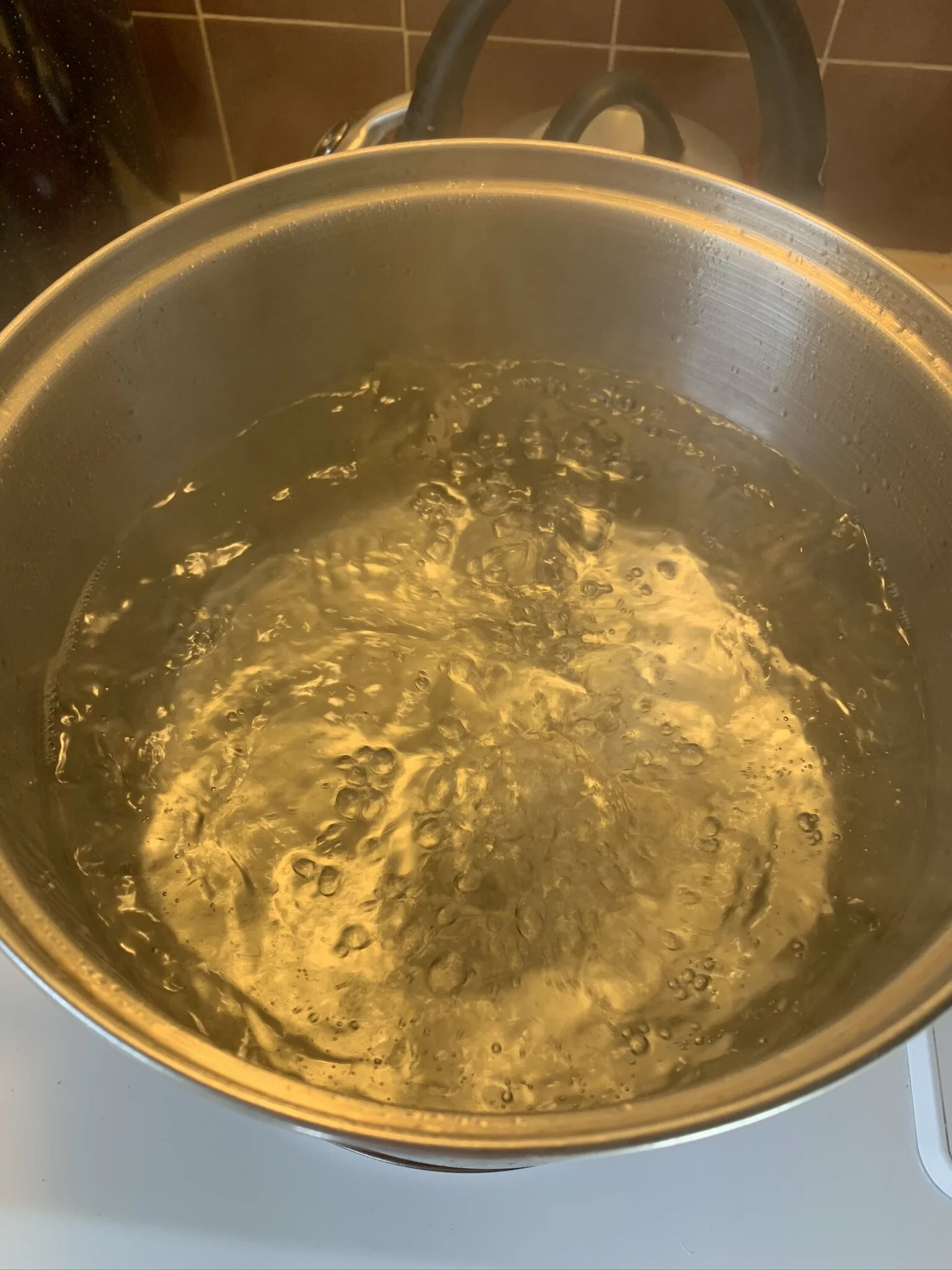How to Make Sea Salt
Written by Jessica Keener
Since the pandemic began, we have been looking for activities to do as a family right outside of our door and at home. It usually involves the ocean, cooking and getting creative!
My husband and I have always wanted to try to make our own sea salt. So, after researching some sea salt foraging techniques, we headed down to the coast one recent Saturday morning to scoop up some fresh seawater with our little one.
Salt Water
1 gallon of salt water will yield about 1/2 cup of salt. Try to find the cleanest ocean water available (not near river run off or from tide pools).Sea salt has been used by humans for thousands of years to preserve and season food. The earliest known salt harvesting can be traced back to around 6,000 B.C. in China. It’s crazy to think about how these tiny grains were such a valuable commodity and have such a rich history. Salt was even used as currency in some cultures. And right down the street from where we live is the main ingredient for us to make our own!
We collected a few gallons of fresh seawater and headed home to begin the afternoon long process. It’s actually really easy to make, just takes time and patience. First, we began by filtering the water using a coffee filter – we wanted to be sure we removed all the small things floating in our water.
Filter
Using a coffee filter or cheese cloth folded over on itself several times, filter the ocean water into the pan you'll boil it in.Once the pot was filled up with the filtered water, we boiled it… for hours! The real work begins when there is only about an inch of water left to evaporate and you begin to see the salt crystals that appear on the bottom of the pan. At that point, we began to stir the water and salt about every ten minutes to avoid burning the salt. As the water continued to evaporate and the salt was forming, we then continuously observed and stirred.
Boil
Assuming you started with a gallon or so, boil it down until there is about an inch of salt water left in the pan.
Turn the heat down to medium low and start stirring every 5-10 minutes.
Once the water was pretty much all evaporated, we removed the salt from the pot and placed it on two sheets of paper towels to dry (you could let it dry for up to a week, but not necessary). Our handcrafted salt from Monterey Bay was ready to use!
Stir
When there is more salt than liquid, turn heat down to low and stir frequently. Dry
Once the majority of the liquid has evaporated and the salt is the consistency of wet sand, transfer to a plate lined with several paper towels and let sit for 5 days. At this point, my husband began getting creative by adding his own seasonings and herbs to make some flavored finishing salt. I mixed a small batch of sea salt with dried thyme and rosemary and also added some edible rosemary flowers.
We had a fun salt tasting and gifting some of our handcrafted sea salt to our family and friends. It’s such a fun family-friendly activity and makes a really tasty holiday gift.
Flavors
To further elevate your salt, try crushing, mixing or mincing then adding the following to your salt:
Smoked paprika and chili powder
Basil, oregano, parsley, thyme, garlic
Rosemary with edible colorful flowers
Dried and crushed bacon
Habanero peppers with pineapple juice
Lime juice and zest






